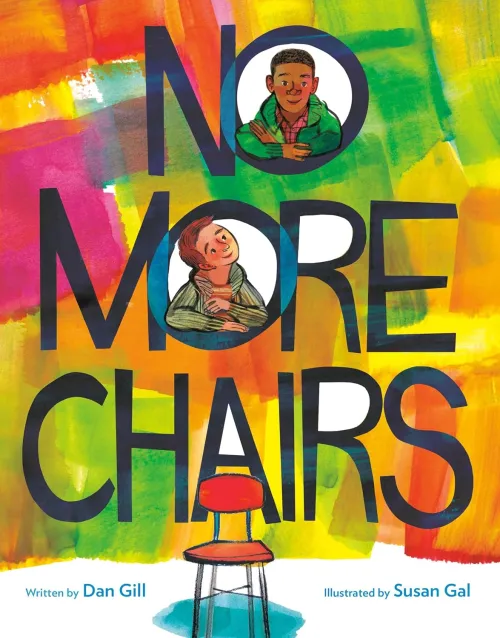Share this book
In his Author’s Note, Dan Gill shares that he’s learned that other schools have adopted the chair as their symbol of acceptance and heard their stories of equity and inclusion. Talk with students about Dan’s story and how it—and the symbol of the empty chair—are reminders to those with privilege that they can—and must—take a stand.
To extend this conversation and deepen students’ understanding, have students think about other everyday objects that could be symbols of standing up and speaking out. Encourage them to reflect on items from their own lives or communities that could serve as powerful metaphors for action, inclusion, and allyship. For example, a pair of shoes might represent choosing to stand up, step forward, and walk with others—symbolizing solidarity, empathy, and the willingness to move toward justice alongside someone who is experiencing exclusion or prejudice.
Ask students to choose an object that holds symbolic meaning for them and either bring the actual object to class or take a photo of it. Then have them create a short written explanation that describes what their object represents. Encourage them to think about what the object represents in terms of action—how it might remind someone to take initiative, show support, or foster belonging. Invite students to share their symbols with the class before using their work to create a gallery of everyday courage and creativity.
Questions for Discussion or Reflective Writing
- What does it mean to be a good friend? What do you think it means to Dan? What do you think it means to Archie?
- What do you notice in the illustrations about how Dan and Archie feel about going to Steve’s party? When they arrive at Steve’s door, what do you notice about Archie and how he is feeling? What does Dan notice about Archie? How do you think Dan feels? When you notice someone is feeling bad, what do you do?
- Why do you think it takes Dan so long to understand what Steve’s mother is really saying when she tells him “there are no more chairs”? Why do you think that Archie understands sooner than Dan does that he is not welcome?
- What do you think about how Dan and Archie reacted to Steve’s mother? What would you have done in that situation?
- After leaving Steve’s apartment building, Archie asks Dan, “Do you ever feel like you want to speak up but you can’t?” Why do you think Archie asks this question? How would you answer his question? How do you figure out if it is a moment for you to speak up for someone or to listen to learn what they want?
- Why do you think that Dan and Archie weren’t in touch with each other as grown ups? What things can cause friendships to change as you get older? Why or why don’t you think you will still be friends with the same people when you’re grown up? What memories of your friends do you think you will always remember?
Related Resources
Longtime Teacher Shares a Lesson in Inclusion in Debut Picture Book from Publishers Weekly
Making Decisions: Ally or Bystander for Students and Adults from Welcoming Schools
Speak Up at School: How to Respond to Everyday Prejudice, Bias and Stereotypes by Learning for Justice
More Titles to Try
-
Across the Alley
Richard Michelson, illustrated by E.B. Lewis
-
I Walk with Vanessa
Kerascoët
-
IntersectionAllies: We Make Room for All
Chelsea Johnson, LaToya Council, and Carolyn Choi, illustrated by Ashley Seil Smith
-
Speak Up
Miranda Paul, illustrated by Ebony Glenn
-
Teammates
Peter Golenbock, illustrated by Paul Bacon
-
That Flag
Tameka Fryer Brown, illustrated by Nikkolas Smith
Stay on top of current education news



